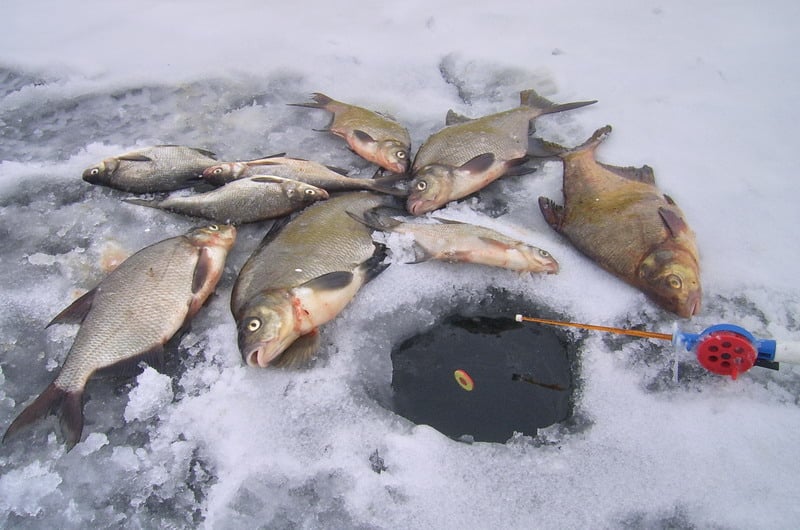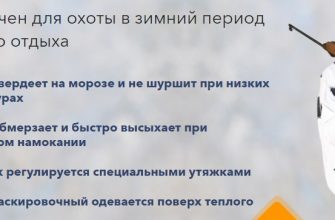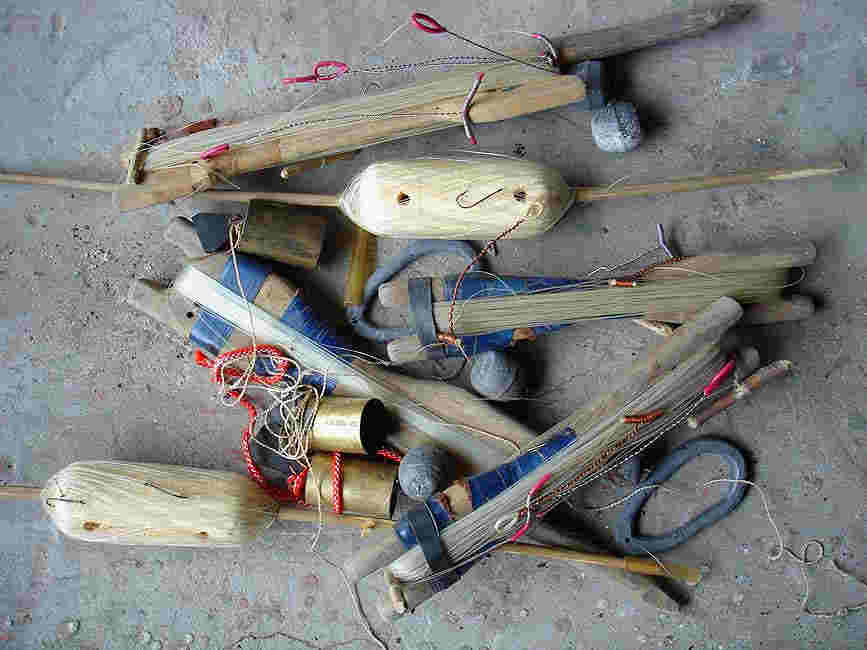Bream is a desirable catch at any time of the year. But it is quite difficult to catch it in winter due to increased caution and attentiveness. The fish has excellent eyesight, hearing and smell. To catch a handsome man and successfully, ice fishing lovers use different methods. But the most successful when fishing for bream in winter is a harvester tackle (aka a descender). The harvester is actively used on reservoirs with the current, it shows good results even during the winter deafness.
Design features of the tackle
Winter harvester tackle is presented in the form of multi-hook equipment, which is held at the bottom of the reservoir by a feeder with a load. This design has established itself as promising, easy to use, compact and durable. Due to the fact that the installation of the hooks is made lower from the load, the bait enters the feeding zone under the force of the current. In general, the harvester is a classic winter fishing rod equipped with a feeder, guard and hooks. In this rig, the trough is the most weighty component. It is immersed in water evenly, so that it is carried away from the hole by a strong jet. The bream, seeing no danger, approaches the bait and grabs the bait. The harvester was developed exclusively for fishing in the current, where there is a high concentration of oxygen. Another name for the rig is a descender. He is appreciated for the absence of such a serious minus,like line wobbles and bait hook drift. Also for the self-striking ability.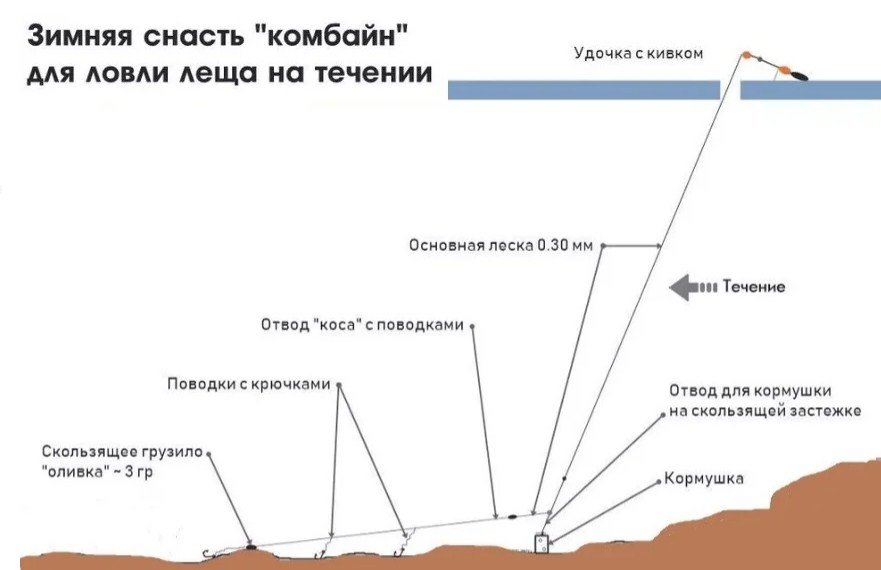
Winter bream and harvester
Bream feeds throughout the winter, showing either high or low activity. In open water, it is often found at an average depth, where there is an abundance of underwater vegetation. When the reservoir is covered with an ice shell, the fish descend into the pits, choosing areas with a hard bottom for habitation. Cartilaginous clay places with an abundance of zebra mussels and other mollusks will be interesting for him. It is not realistic to find bream on a strong current; it prefers to keep areas close to it. These are curbs, dumps, tables. Finding the habitat of the flock is considered to be a key ingredient to the success of ice fishing. Bream does not move alone, but gathers in groups to search for food.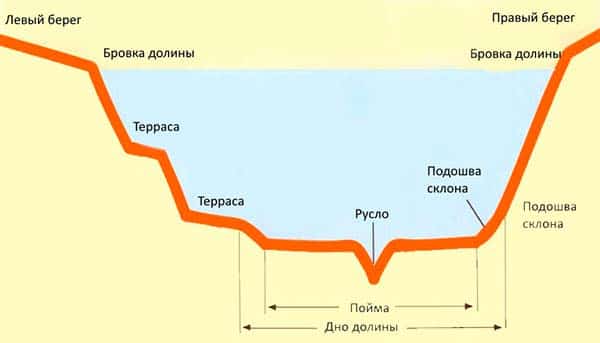
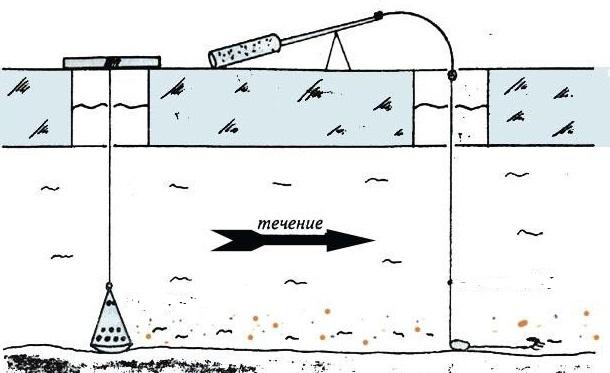
The principle of operation of the harvester tackle
It is not difficult to use the tackle, even a beginner can handle it. It is enough to immerse it in water for the feeder to reach the bottom. A long leash with hooks will carry the current a little lower from the hole. Thanks to this, the harvester does not arouse undue suspicion among the underwater inhabitants. The bait mixture is gradually washed out, keeping the fish at the fishing point. With a competent approach, it is possible to catch trophy individuals. The tackle demonstrates its high performance only on flowing water bodies.
Fishing tackle components harvester
Fishing for bream from ice to a combine harvester requires a well-tuned tackle that will work effectively both in the current and at serious depths. In the traditional version, the components of the tackle are:
- Rod and nod . It is not necessary to choose a fishing rod from the expensive ones; the economy option is also suitable. The main thing is to be comfortable to use on ice. The length of the whip can vary within the range of 25-30 cm. Of the coils , models with a stopper element and a diameter of 45-50 mm work well . The optimal material for making a gate is a coil spring, which has a high degree of rigidity. Its length is 15-20 cm. For more informational content, a bright ball is mounted at the end. The people called such a nod “chupa-chups”. You can also provide a sound alert using a rattle.
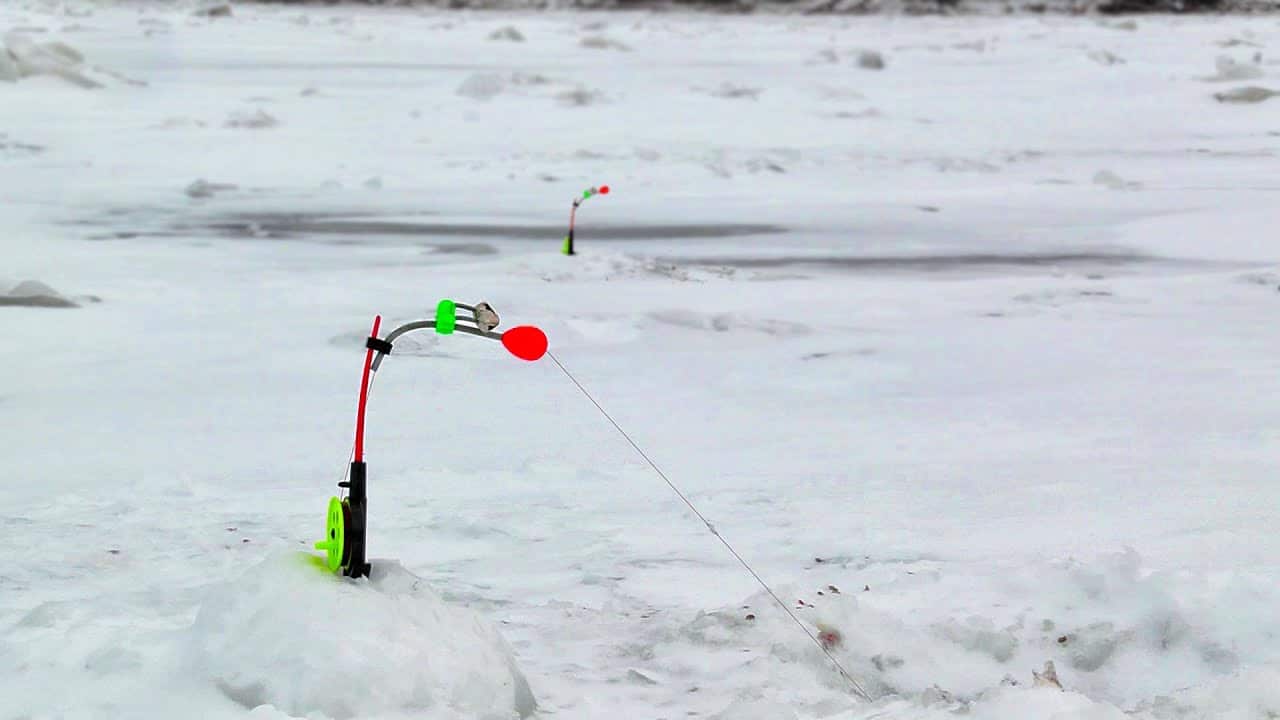
- Fishing line . It is not rational to use thick monofilament lines when fishing for bream from ice on a combine. It is more effective to choose a yellow / green line with a diameter of up to 0.25 mm. This line will be clearly visible in the snow. To assemble the tackle, a line with a thickness of 0.25-0.3 mm is used for the main conductor, a thickness of 0.22-0.25 mm is used for the manufacture of the tail section, and 0.14-0.18 mm thick for the leads. To make a tail, you need 5-6 meters of monofilament, the supply of line should be 20-30 meters.
- Leashes . On the tail of the rig, double loops are made, the distance between which is 0.7-1.2 meters. 3-4 monofilament leashes 10-15 cm long are attached to them. Longer versions on the harvester are not needed, there is a high probability of hooks, confusion in the fishing process.
- Hooks . The optimal number of single hooks is 6-8. The main thing is that they are sharp and reliable. Long-shank hooks work best for bream. From the known knots, it is worth choosing a knot palomar, clinch, bayonet (for hooks with a shovel ). To fix the leash on the tail to the loops, use the loop knot in the loop. To improve the tackle, a small cocoon of ordinary white thread is wound on the hook shank. After that, it is covered with a special reflective compound. This is a very correct approach if the hunt is planned at night.
- Feeder . The type of feeder is selected taking into account the bait used. Both the usual feeder and the home-made one are appropriate here. The main thing is to load it, taking into account the strength of the current at the fishing point.
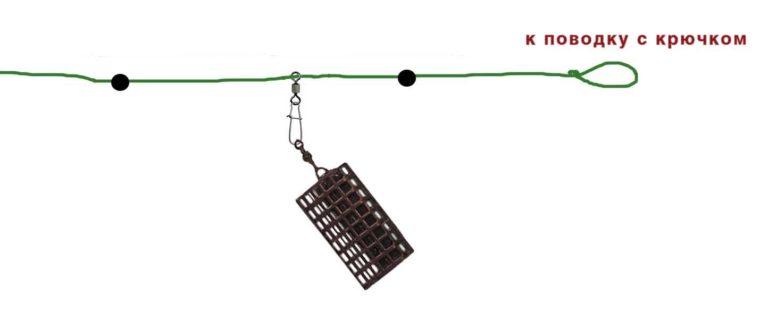
Installation of a harvester for winter fishing for bream: https://youtu.be/w3MSCU9XK9U
For information! It is not recommended to put more than three hooks on the combine. More will result in more holds. 2-3 hooks – this amount is quite enough for catching active individuals. You can catch 2-3 fish at a time.
Making tackle harvester for winter fishing for bream with your own hands
Everyone can assemble a harvester at home. The main thing is to prepare the necessary materials and adhere to the following technology:
- Install the reel on the fishing rod, also install the bite alarm. Prepared 30 meters of monofilament should be driven through a nod.
- Pass the main line through the carabiner swivel, securing the three rubber stops.
- Attach a leash 1.5-2 meters long to the monofilament using a reliable knot.
- Attach a weighty lead jig on the guide’s tail. After 40 cm towards the rod, fix another leash, the length of which is 20 cm. At its end, attach a hook with a reflective element. In the same way, 2 more hooks are mounted, stepping back 40 cm.
- Tie a leash (length 30-40 cm) to the feed. Form a loop on the loose ponytail.
- Mount the feeder on the swivel carabiner.

Search for promising places
Even though bream is more active in rivers than in lakes, it is not easy to find it. On the first ice, it migrates throughout the reservoir in search of food, it is also found at shallow depths. In the middle of winter, underwater inhabitants tend to find themselves at a depth. Hunting is successful in large bodies of water, where the depth is 7-10 meters. Catchy jobs often include:
- channel turns;
- indentations;
- areas behind the cape after the turn, where a quiet current borders on a strong one;
- places of exit from the channel pit with a moderate current;
- areas where the channel narrows sharply.
With warming, large individuals increase their appetite, bream begins to actively feed in order to gain strength and energy before spawning. He goes into shallow water, willingly takes the proposed baits, the time of active bites is significantly increased. The priority for bream is areas with a clayey and silted bottom. It is located where there is a high concentration of oxygen, there is no rotting vegetation.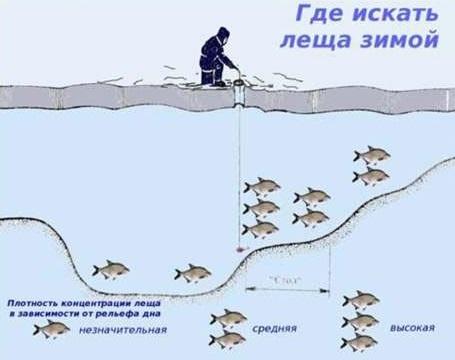
Fishing technique
To catch winter bream with a harvester, you should follow these recommendations:
- Drill holes in a stepwise pattern. The first is made at the heap of a hole on one bank and ends at the heap on the other bank. Such a technique will eliminate the entanglement of the gear, and survey a large area of the reservoir, finding places where fish are concentrated.
- Clean the holes from the sludge using a slotted spoon.
- Collect tackle, fill the feeder with bait and lower it quietly into the hole. The mixture for complementary foods can be of your own production or from a store. The main thing is that there should be a fodder bloodworm , maggot in the composition . Effectively works on bream pure mormysh, small bloodworms.
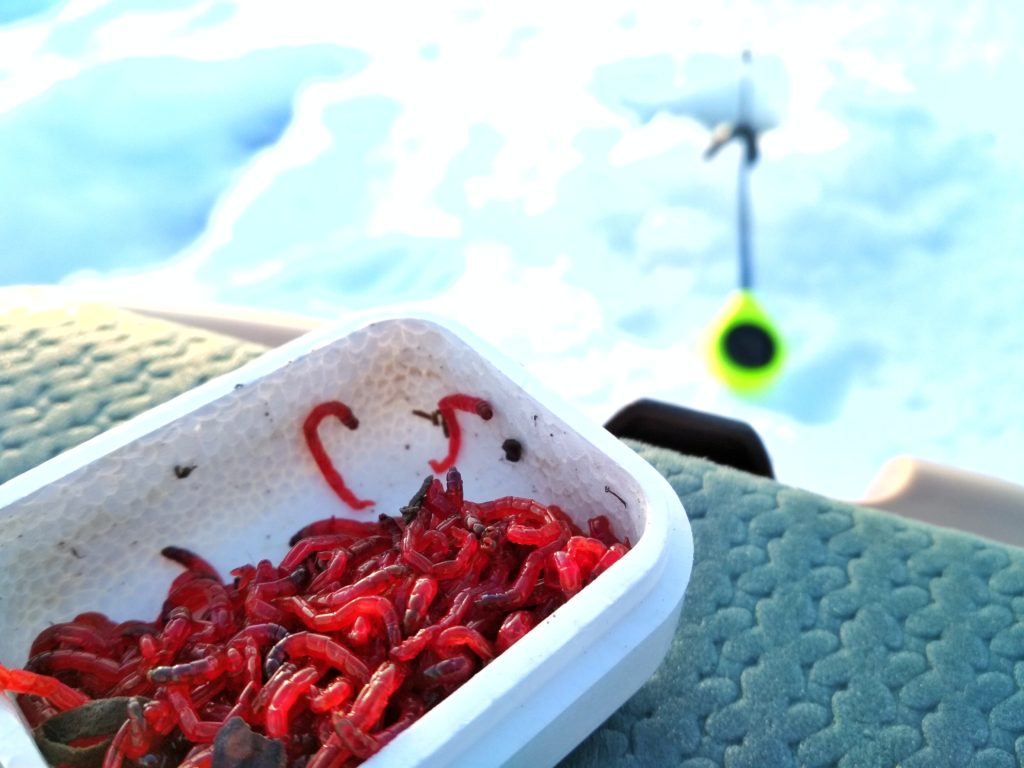
- Throwing the tackle into the hole, the tail section is launched first. The next is the feeder with bait. When it has reached the bottom, the rod is placed vertically near the hole. A mound of snow, sludge is suitable for these purposes.
- Pulling out the tackle. The fish in most cases is self-biting. The nod is constantly moving up and down or bends in an arc when the prey is on the hook. It is worth getting the catch without sudden movements. The
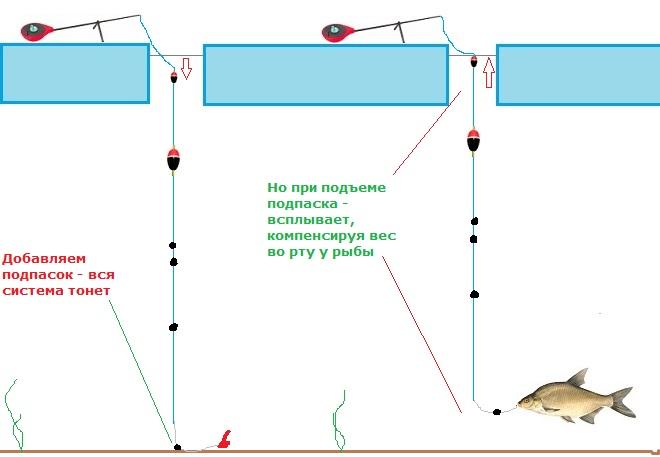
- After removing the bream from the hole, you need to check for overlap of other hooks. If there is a need, a bait mixture is added to the feeder. And plunge the rig back into the hole.
Winter fishing on a harvester for bream – video from the ice of the reservoir, features of the rigging and installation of the descent: https://youtu.be/p4cxP41cBjY
Experienced tips
To achieve the desired results, do not heed the advice of experienced anglers. Among which:
- use a well-tuned tackle;
- choose sharp and reliable hooks;
- take plenty of bait;
- observe safety precautions on ice;
- use water for bait from a specific reservoir.
Catching winter bream with a harvester is within the power of both experienced fishermen and beginners. With careful preparation of the tackle, choosing the bait, you can achieve very high results. This is an affordable and easy-to-make tackle that works great on the current.
